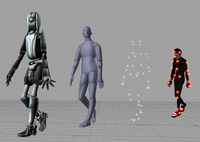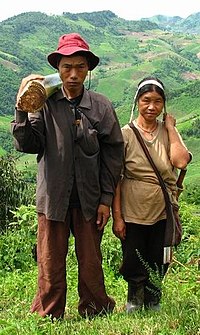
Elevated diversity in loci linked to facial morphology is consistent with the hypothesis that individual facial recognition is important across hominoids.
Sign Up to like & getrecommendations! Published in 2021 at "American journal of physical anthropology"
DOI: 10.1002/ajpa.24233
Abstract: OBJECTIVES The ability to use visual signals to identify individuals is an important feature of primate social groups, including humans. Sheehan and Nachman (2014) showed that loci linked to facial morphology had elevated levels of… read more here.
Keywords: loci; loci linked; diversity; facial morphology ... See more keywords

Prenatal alcohol exposure and facial morphology in a UK cohort.
Sign Up to like & getrecommendations! Published in 2019 at "Drug and alcohol dependence"
DOI: 10.1016/j.drugalcdep.2018.11.031
Abstract: BACKGROUND High levels of prenatal alcohol exposure are known to cause an array of adverse outcomes including fetal alcohol syndrome (FAS); however, the effects of low to moderate exposure are less-well characterized. Previous findings suggest… read more here.
Keywords: prenatal alcohol; facial morphology; exposure; alcohol exposure ... See more keywords

Masseter Muscle Volume Changes Evaluated by 3-Dimensional Computed Tomography After Repeated Botulinum Toxin A Injections in Patients With Square Facial Morphology
Sign Up to like & getrecommendations! Published in 2019 at "Annals of Plastic Surgery"
DOI: 10.1097/sap.0000000000001705
Abstract: Introduction Botulinum neurotoxin A (BoNT-A) is a minimally invasive and technically straightforward treatment of masseter muscle (MM) volume reduction and facial contouring, but the literature on its long-term effect on MM volume remains unclear. Objective… read more here.
Keywords: muscle volume; volume changes; volume; facial morphology ... See more keywords

Computer simulations show that Neanderthal facial morphology represents adaptation to cold and high energy demands, but not heavy biting
Sign Up to like & getrecommendations! Published in 2018 at "Proceedings of the Royal Society B: Biological Sciences"
DOI: 10.1098/rspb.2018.0085
Abstract: Three adaptive hypotheses have been forwarded to explain the distinctive Neanderthal face: (i) an improved ability to accommodate high anterior bite forces, (ii) more effective conditioning of cold and/or dry air and, (iii) adaptation to… read more here.
Keywords: facial morphology; air; modern humans; neanderthal facial ... See more keywords

Correlation between facial morphology and gene polymorphisms in the Uygur youth population
Sign Up to like & getrecommendations! Published in 2017 at "Oncotarget"
DOI: 10.18632/oncotarget.16187
Abstract: Human facial morphology varies considerably among individuals and can be influenced by gene polymorphisms. We explored the effects of single nucleotide polymorphisms (SNPs) on facial features in the Uygur youth population of the Kashi area… read more here.
Keywords: youth population; uygur youth; distance; gene polymorphisms ... See more keywords

SNPs Associated With Testosterone Levels Influence Human Facial Morphology
Sign Up to like & getrecommendations! Published in 2018 at "Frontiers in Genetics"
DOI: 10.3389/fgene.2018.00497
Abstract: Many factors influence human facial morphology, including genetics, age, nutrition, biomechanical forces, and endocrine factors. Moreover, facial features clearly differ between males and females, and these differences are driven primarily by the influence of sex… read more here.
Keywords: genetic variants; facial morphology; morphology; human facial ... See more keywords